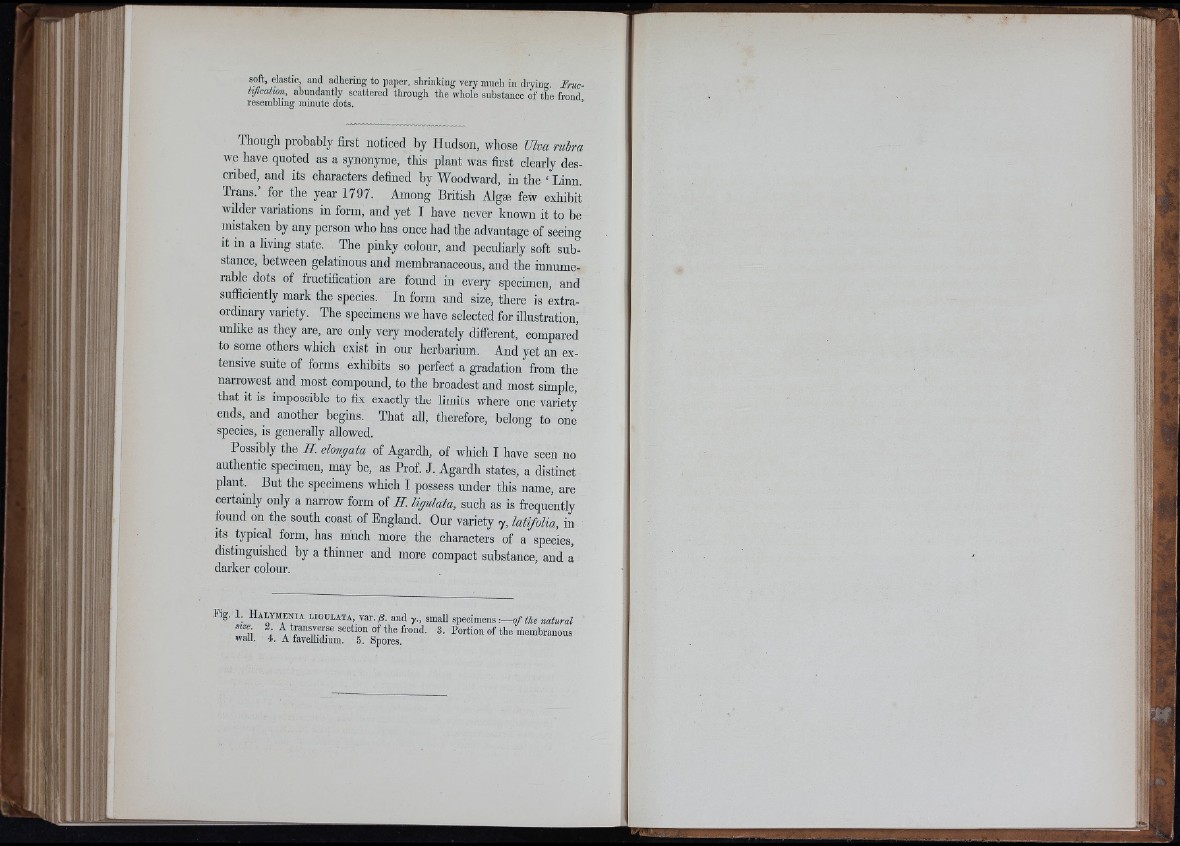
soft, elastic, and adhering to paper, shrinking very much in dr-ying. Iruc-
tijicalwn, abundantly scattered through the whole substance of the frond
resembling minute dots. ’
Though probably first noticed by Hudson, whose TJlva rubra
we have quoted as a synonyme, this plant was first clearly described,
and its characters defined by Woodward, in the ‘ Linn.
Trans.’ for the year 1797. Among British Algse few exhibit
wilder variations in form, and yet I have never known it to be
mistaken by any person who has once had the advantage of seeing
it in a living state. The pinky colour, and peculiarly soft substance,
between gelatinous and membranaceous, and the innumerable
dots of fructification are found in every specimen, and
sufficiently mark the species. In form and size, there is extraordinary
variety. The specimens we have selected for illustration,
unlike as they are, are only very moderately different, compared
to some others which exist in our herbarium. And yet an extensive
suite of forms exhibits so perfect a gradation from the
narrowest and most compound, to the broadest and most simple,
that it is impossible to fix exactly the limits where one variety
ends, and another begins. That all, therefore, belong to one
species, is generally allowed.
Possibly the H. elongata of Agardh, of which I have seen no
authentic specimen, may be, as Prof J. Agardh states, a distinct
plant. But the specimens which I possess under this name, are
certainly only a narrow form of H. ligulata, such as is frequently
found on the south coast of England. Our variety y, latifolia, in
its typical form, has much more the characters of a species,
distinguished by a thinner and more compact substance, and a
darker colour.
Fig. 1. H a l ym en ia l ig u l a t a , var. S- and y., small specimens •— o f the i
m e 2. A transverse section of the frond. 3. Portion of the membrmrous'
waU. 4. A faveliidmm. 5. Spores.